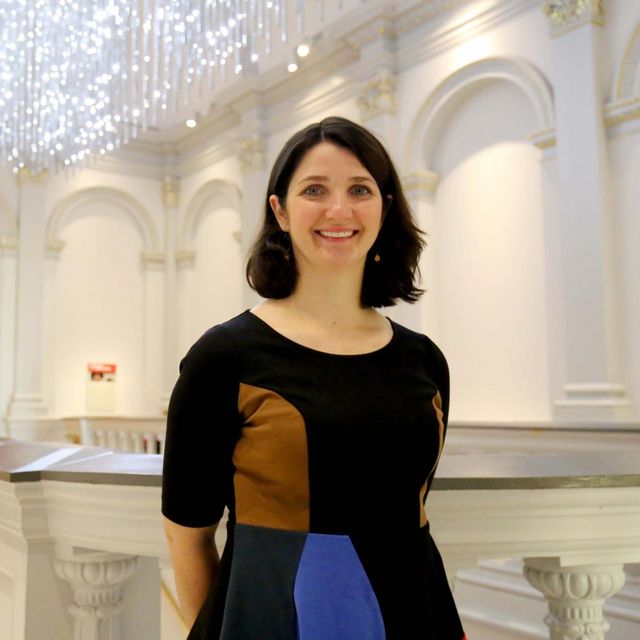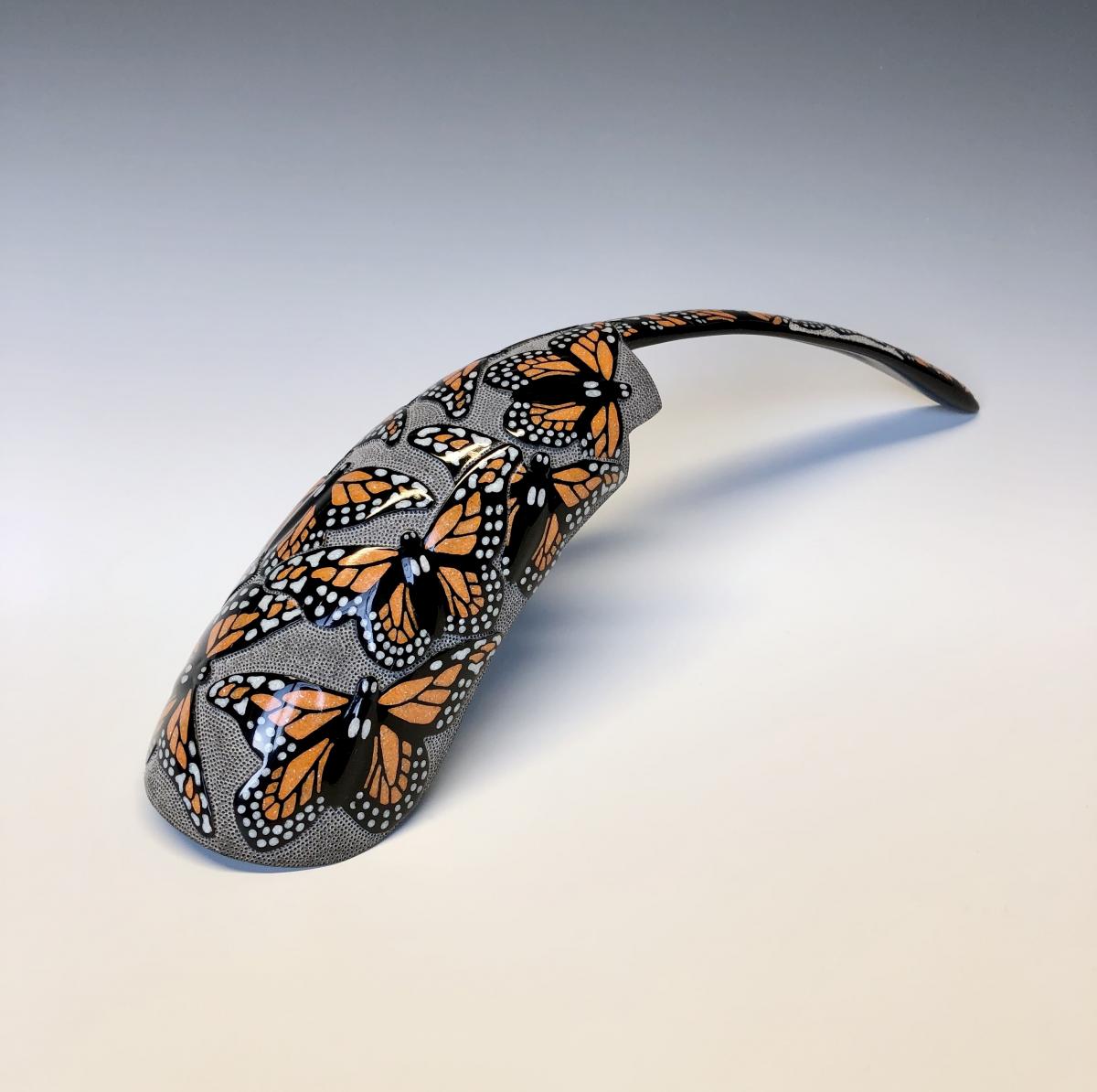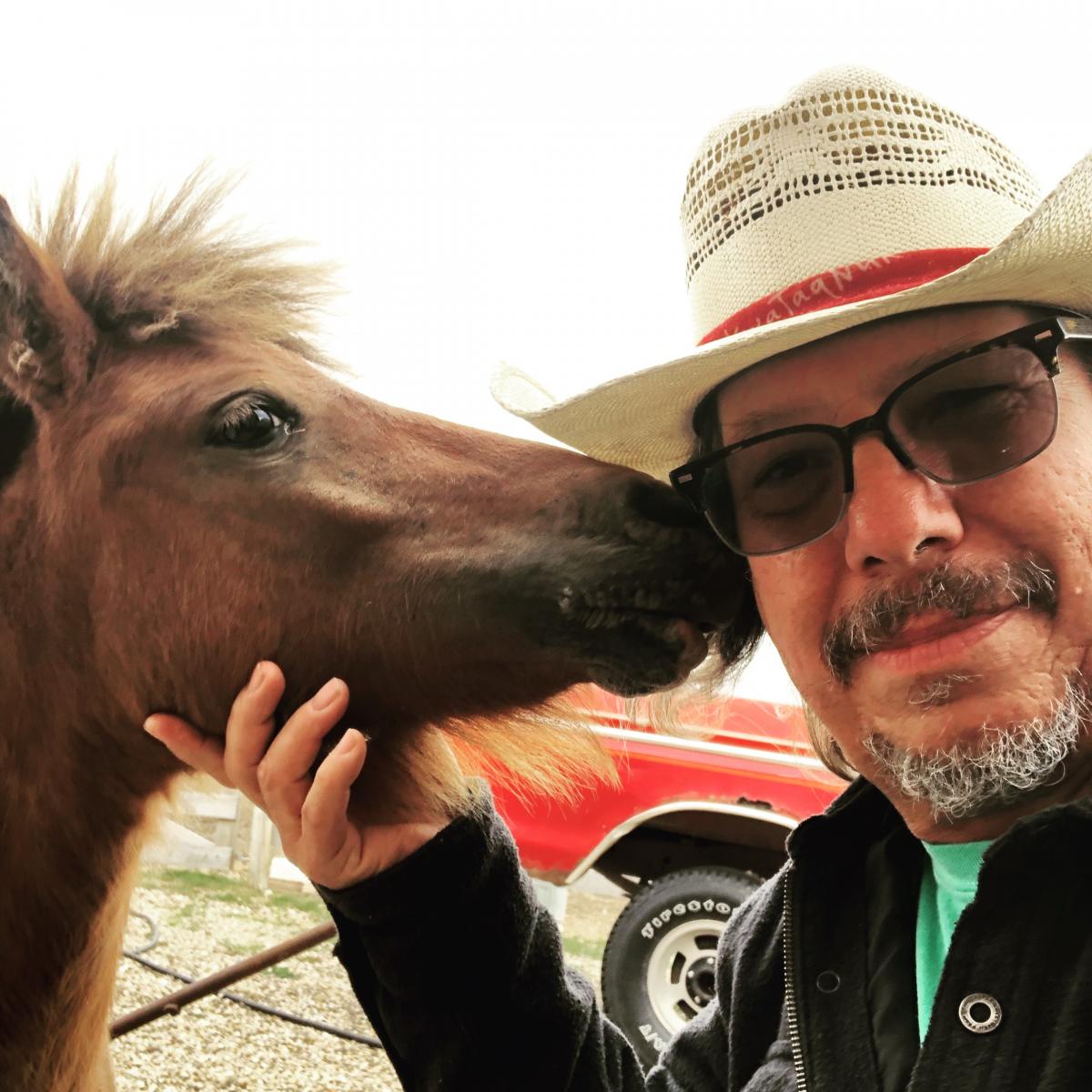
Mary Savig, the Lloyd Herman Curator of Craft at SAAM’s Renwick Gallery, has been collecting firsthand accounts of the dual pandemics, COVID-19 and systemic racism, from artists working with craft-based materials and techniques. In this series, “Making the Most: Craft Practice during the Dual Pandemics,” artists share personal insight into how they responded to the cascade of canceled or delayed programs, workshops, and exhibitions, as well as the demands of social distancing and social justice. Each account brings new understanding to the import of the studio as a space of reflection, creation, and collaboration.
Kevin Pourier (Oglala Lakota) has a home and studio on the Pine Ridge Reservation in South Dakota. For twenty years, he and and his wife, Valerie, have created art from buffalo horn, a material with a deep ancestral and cultural connection—the name of the Lakota “Pte Oyate” translates as “buffalo people.” SAAM recently acquired Monarch Nation (2019) by the Pouriers.
Describe your daily routine during COVID-19.
I live on a working cattle ranch that my 88-year-old father runs cattle on. Since COVID-19 started, I haven’t traveled anywhere. I’ve stepped up helping with most of the daily chores since my studio is hooked on to my dad’s barn. First thing I do when I get to the studio is feed two horses and two bulls that we keep in the coral. The bulls are very pushy, and my dad is too slow to get out of the way, so it’s now my job. After that, if there isn’t anything else, I will get in my studio. I’ve cleaned my shop so many times now I’ve lost count. I was told a long time ago if you are ever stuck on making something to at least still go to the studio and hangout or clean up. Just little things help me to try to stay focused, like gathering firewood and starting a fire in the woodstove.
How has the pandemic changed your studio practice (for example, describe the effect of lockdowns, exhibitions, collaborations, teaching, shows, and protests)?
Since becoming an artist, I’ve sold my work at art markets around the country. There was always a deadline to work toward and I would schedule my time to have certain pieces done before I left for the show. The first effect of the pandemic was the cancelation of an artist residency at the Institute of American Indian Art in Santa Fe, New Mexico. I was five days away from leaving and was actually packing my studio up to leave when I got the notice that it was canceled. I was so disappointed. I was planning to work in the foundry and create some bronze work that was going to take my art in a whole new direction. All I could do for four months was to just hang out in the studio. Then my biggest show of 2020, the Santa Fe Indian Market, which is always held in August, was canceled. Usually, my summers are spent getting ready for this amazing show. I was getting small orders online and would make only about one thing a week just keeping up with orders. I usually create a “show piece” for the Santa Fe Market but last year didn’t. I was having a real hard time focusing. This year, however, the Market is both virtual and live, and I will be there, helping to celebrate its 99th year.
What does your life look like without travel or in-person collaboration? How has this changed your practice?
On one hand, staying at home has been very strange; on the other hand, it’s been a very well-needed rest from the grind of creating a “show piece” for the two major shows I do a year. Since I started in the art business that is just something most artists do is try to win the top awards at these shows. One of the things I missed the most is gathering with my group of artist friends. Even keeping in touch with a lot of them was hard, since they were all home with family, and many were in the same shape with nothing going on. I don’t have any inventory to speak of, but the strange thing to me is that I was busier than ever. I got a couple of big commissions and sold some large works to museums.
How has your sense of home shifted with the pandemic? For example, how has your relation to food or domestic life changed? How do you connect to others?
I have really come to love my studio. I have gone to my studio every day for over a year now. I’ve been very conscious of watching what I eat and staying healthy. I was determined to have a healthy immune system. I have one friend who was making natural immune boosters and medicines to help protect from the virus. I was into taking the medicines and staying aware of my body.I have always been a “phone” person. I reach out to many of my friends and just visit. I can talk for hours sometimes.
What is drawing your attention these days (i.e., books, film, tv, music, social media, pets, etc.)?
Living in the country, I always pay attention to all the wildlife that comes by or lives here. We had an owl family that raised some babies right above my studio. I was really into studying and documenting everything they did.
Doing everything online now with my business, I have been trying everything I can to keep my work relevant. Not knowing how long everything was going to be shut down, I really had to educate myself on a lot of new things. I have made my living for the past 30 years from the sales of my art. I plan on staying in the game as long as I can.
How have the dual pandemics provided insight into current or ongoing projects?
I have always created artworks that speak out about behaviors and issues in our Native communities. Before the COVID-19 shutdown, I was commissioned by a collector to do a “political” piece. There have been so many subjects over the past four years, especially the last year, that I have a whole list of ideas to put out there. Being able to deal with these crazy things that have been happening by creating them in my art has been my life saver. There will be many projects to keep me busy in the coming years.
What have you experienced or learned about systemic racism in the United States? How does the past year feel different or contiguous?
Seeing the Black Lives Matter movement and the support they had was an inspiration to me. The question I always said to myself was “What about Native Americans”? Native struggles always seem to be invisible to most Americans. The border towns around my reservation have some of the most racist people. In 2020, it seemed to me people were more emboldened to just say what was always on their minds out loud. I feel like I’ve had to step up more and defend, protect, and be on the lookout for ignorant people.
What would you want readers 10/50/100 years from now to know about your life and work during this period?
I want everyone who sees my art to think that my art was a voice of a 21st century Lakota man. I want people to know that I had a voice, that I spoke out and stood up. I also want people to understand that my art was all about healing, creating dialogue and understanding about our behaviors. I want people to see my art and put themselves in the shoes of a minority, and feel the oppression and the hopelessness, but also the pride and courage and tenacity Lakota have.
What feels most important going forward?
I will continue to make art that deals with the injustices that happen to Native Peoples of this country and the strengths that we have to continue to survive. Going forward, I want to make work that is honest, thought producing, moving, enlightening, hopeful, and gives young people pride in who they are and where they are from.






















